There’s things American reptile keepers often take for granted, such as easy access to frozen rodents and other feeders.
When one thinks of regions aside from the United States where the reptile hobby has a vast presence, East Asia comes to mind. Japan, Taiwan, and Malaysia in particular are home to a multitude of incredible reptile and amphibian species. Professional herpetologists, reptile breeders, and enthusiasts of all skill levels eagerly participate. Upon leaving for my vacation in Ireland last May, I headed straight to Galway from the airport with my email blissfully on vacation mode. Having years of experience planning epic solo vacations, I planned on climbing sea cliffs with plenty of brown bread and Aperol spritzes between long train journeys while leaving wiggle room for the unexpected.
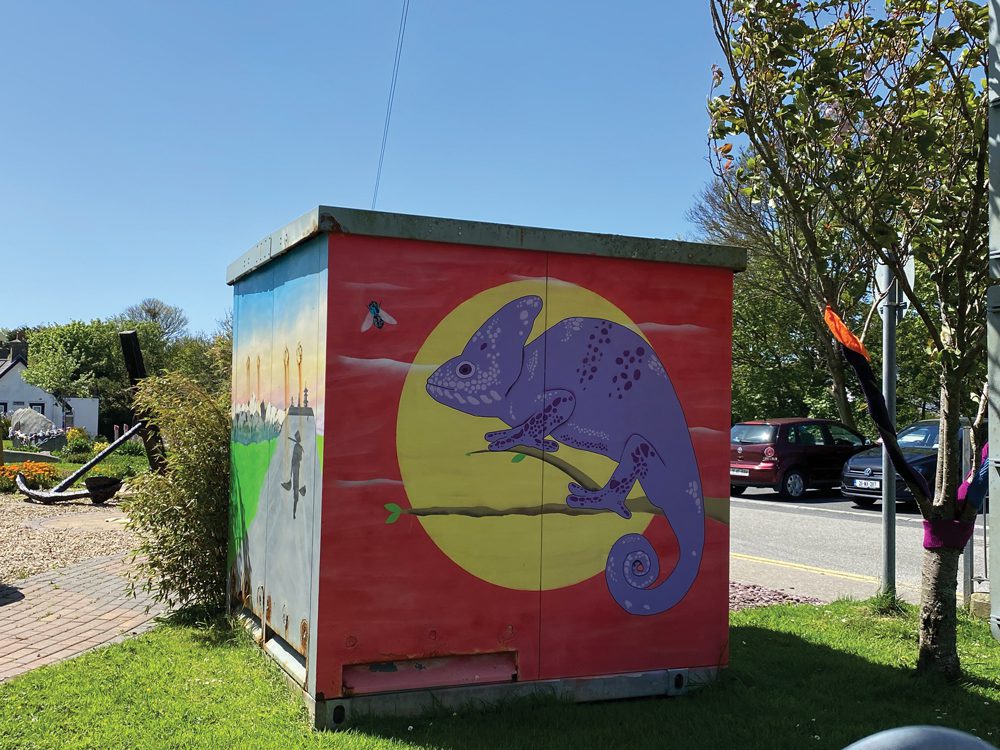
A veiled chameleon painting adorns the wall of this building in Ireland. Photo by Rachel Presser
One of the most unexpected but delightful parts of this trip? The discovery that Ireland is home to an incredibly thriving herp hobby where our scaly, smooth, and spiny companions receive the same legendary Irish hospitality as their human counterparts.
Throughout my vacation, I noticed subtle signs of the country being herptile-friendly and beckoning reptile keepers to consider making this mystical green land their new home. They started small like the frog emblem on Leap transit cards, snake and lizard murals on city streets and playgrounds, and the tables at every coffee shop and bed and breakfast I went to sported condiment cups containing sugar packets from Salamander Coffee.
I first chalked it up to an amusing coincidence and being the type of person who expressly seeks herpetological iconography everywhere I go. But it turns out that reptile keepers are a less-discussed yet substantial group of expats creating new homes and enclosures alike on the Emerald Isle.
Americans who have at least one Irish grandparent can easily apply for Irish citizenship and their spouses have a fast track to naturalization regardless of heritage. Unsurprisingly, Business Insider named Ireland the best destination for American expats based on immigration protocols, housing prices, and other criteria relevant to Americans about to vote with their feet.
Houses tend to be more amenable to reptile enclosures than apartments and while Ireland is experiencing its own chaotic housing markets, affordability is more palpable to would-be homeowners compared to America. This is especially true in the verdant Irish countryside in relation to housing in major American job centers. Even though Irish homes aren’t as large as their American counterparts, they’re built for retaining the warmth that our herptiles require.
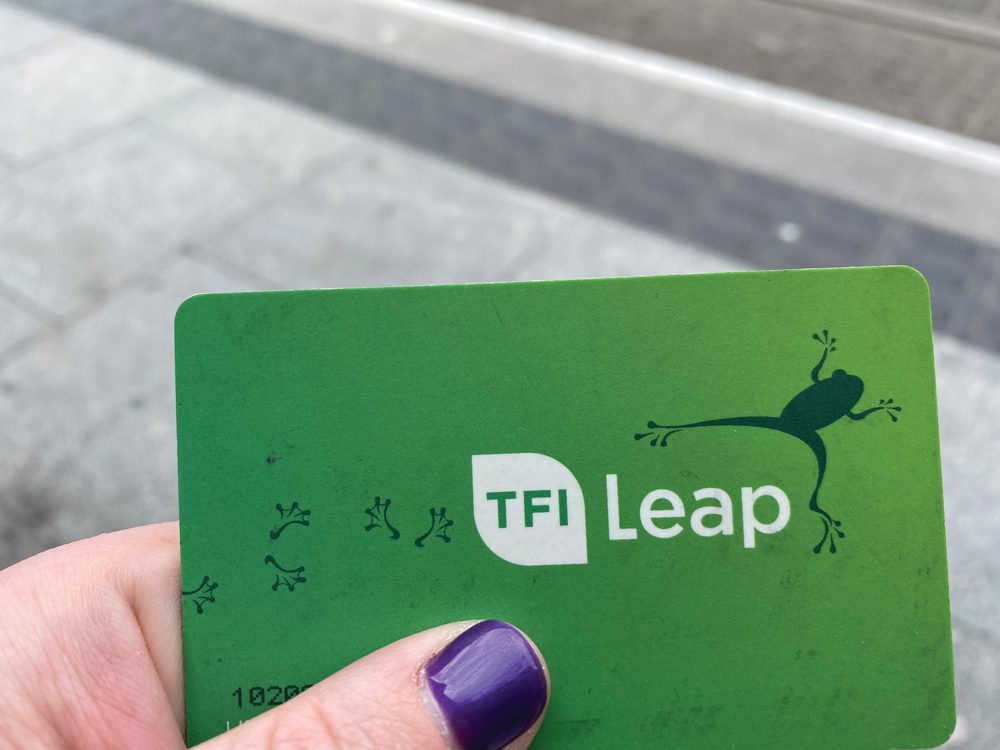
TFI leap transportation card. Photo by Rachel Presser
Americans flock to Ireland for myriad reasons, but many a continental European who yearns for scaly companions also packs up for the small island nation in the face of severe restrictions on their beloved pets, if not outright bans.
Reptiles and amphibians are even listed in the Irish government’s protocols typically utilized for accompaniment from more traditional pets like dogs and cats if you plan to immigrate, with a maximum of five pets permitted regardless of type. Having met a Ukrainian reptile keeper who made egress to a friend in Dublin with his pet python, these protocols are even more relaxed if you have refugee status. The two plan on starting a reptile rescue in central Dublin.
Immigrants otherwise must check with the national wildlife service to determine if a CITES license is required for relocating with your pet. Once you’re in Ireland however, you must undergo a licensing process to get a dog or cat but this is not required for any reptile or amphibian.
In what seems like one of life’s greatest ironies, how did the land that is said to have cast out all of its snakes become the EU’s haven for reptile keepers to the point it’s also attracting American expats?
A Regulatory Haven in Symbiosis with a Herptile-Hostile Ecosystem
Ireland is a nation of tea drinkers on account of its cool, rainy climate. While many humans find this soothing, it is not amenable to cold-blooded animals. This is why the notion of St. Patrick banishing all the land’s snakes is actually a myth since this scientific breakdown shows that Ireland could only sustain snakes as of 15,000 years ago. Even though snakes can swim, there’s no way they could’ve survived that icy journey across the North Channel. Nevertheless, this mythos strongly persists and many believe it’s evident in Ireland’s visible lack of reptiles. At least, the herptiles that are visible at first blush.

Snake scotch at an Irish playground.
Photo by Rachel Presser
Ireland’s sole native reptile, the viviparous lizard (Zootoca vivipara), is an incredibly rare and fascinating lizard that gives live birth every September after mating season in April. The slow worm (Anguis fragilis) is a legless lizard that was introduced from England in the 1970s. Per the Herpetological Society of Ireland, their shores also see migratory species like leatherback turtles. But it’s truly Eire’s vivacious reptile hobby that accounts for the majority of cold-blooded presence on the verdant and misty island.
In comparison to larger and climate-diverse nations with large reptile hobbies such as Japan and the US, Ireland has a significantly smaller and less complex ecosystem. Relatively speaking, escaped exotic pets still pose a concern but are less likely to foment mass ecological damage. Ireland is still a wonderfully biodiverse island that also has its concerns about invasive species: but if a reptile expo went wrong and massive varanids were spotted lumbering to the Cliffs of Moher, they sadly wouldn’t make it very far. The cold and wet land is incredibly unlikely to foster a repeat of Australia’s cane toad population explosion.
Subsequently, Ireland’s lack of regulations for exotics is the primary reason why the reptile hobby has taken off relative to other EU countries.

Salamander Gourmet Food. Photo by Rachel Presser
It’s estimated that roughly 100 million Europeans on the mainland keep exotic pets in varying degrees of legality. While European lawmakers’ primary objective is to crack down on “tiger kings” and other poachers of endangered species, reptile hobbyists are inadvertently caught in the crosshairs. Authorities understandably target large-scale smuggling rings and people doing inadvisable things like keeping Komodo dragons as pets, but the errant tegu or reticulated python owner falls into a legal gray area or black hole.
Across the pond, American reptile keepers were under threat from the Lacey amendment of the America COMPETES Act, in what would’ve been the first federal ban affecting the reptile hobby and moving exotic pets across state lines. Since the law would’ve hurt zoos, aquariums, and rescue efforts as well, the amendment was stricken after advocacy from the hobby and conservationists alike.
Unlike Ireland and many other continental European nations however, the US is composed of multiple climates with several key differences in biodiversity. Subsequently, patchworks of state and local ordinances regulate the reptile hobby.
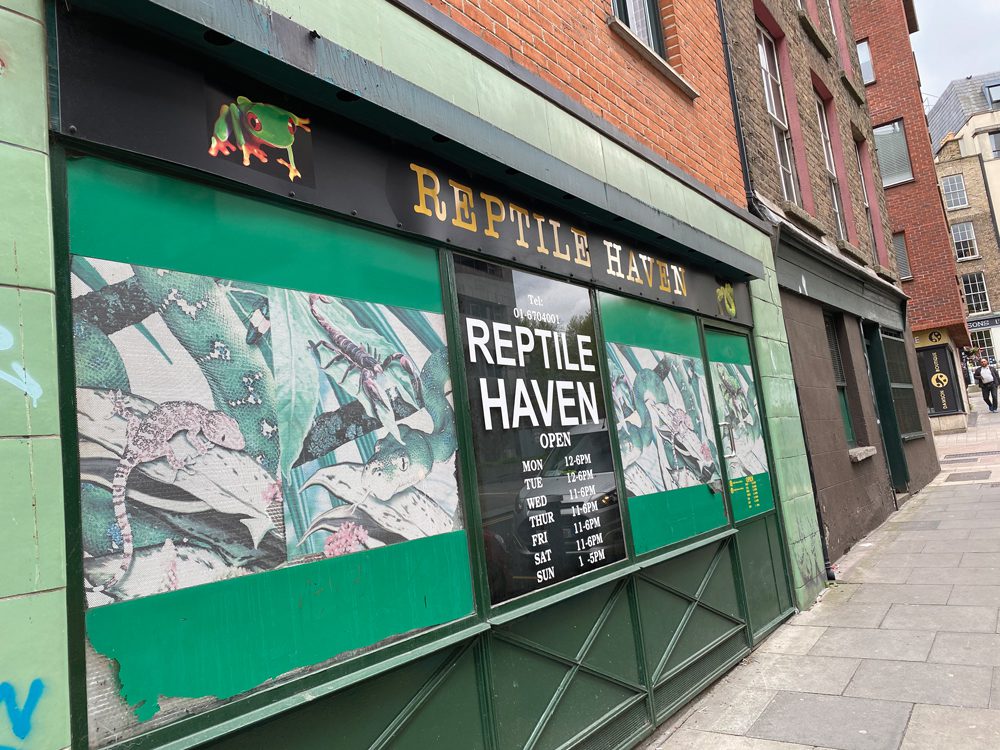
Reptile Haven reptile store in Ireland. Photo by Rachel Presser
These regulations are often the result of genuine ecological and conservation concerns, including the reasonable expectation that wild animals and endangered species shouldn’t be kept as pets. Highly-localized issues in that state or county are also why the Lacey amendments were met with extreme criticism.
For instance, iguanas were banned in New York City when they became a popular fad pet in the 1990s. The city’s animal shelters weren’t able to take any more of these lizards that grew too large for the average New York City apartment, a highly-coveted form of minuscule housing that isn’t exactly known for exotics-friendly landlords and co-op boards. In Florida, tegu and iguana breeding went from completely unregulated to banned overnight due to them being two of many invasive species that now call the state’s delicate ecosystems home.
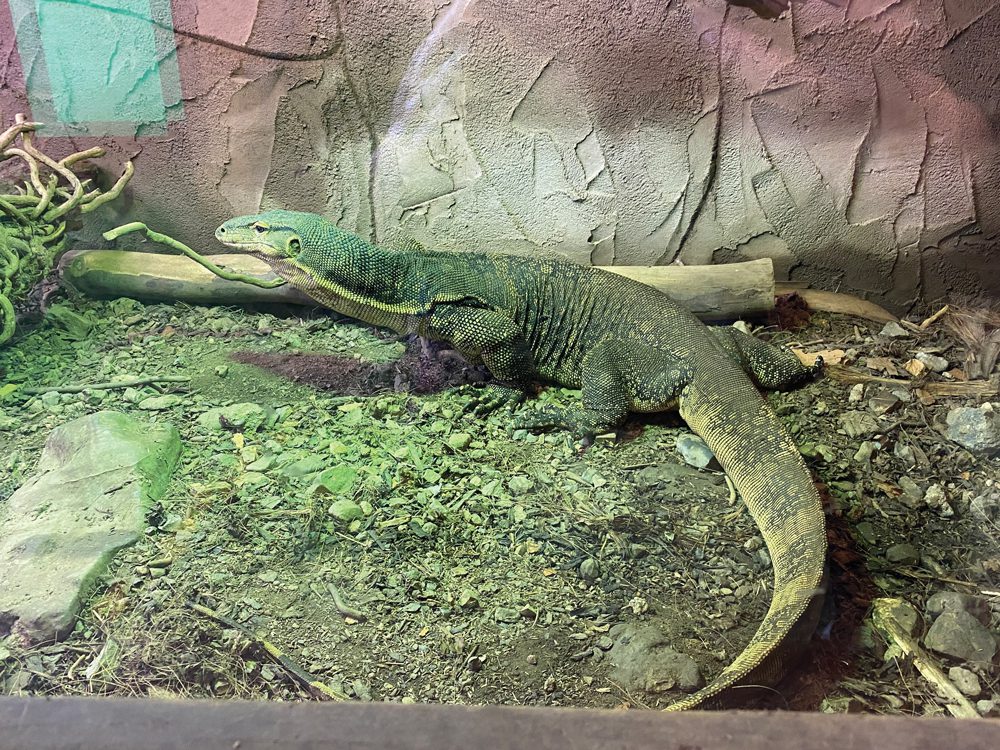
Asian water monitor. Photo by Rachel Presser
While non-native herptiles don’t require a license in Ireland, under the Wildlife Act of 1976, native reptile and amphibian species cannot be kept without a license. They are illegal to have as pets and may only be kept for scientific research purposes.
Other times, lawmakers have incredibly different interpretations of what constitutes “dangerous” and don’t take the time to listen to reptile experts. They result in laws that cause irresponsible keepers to abandon their pets or take risks with their health, and responsible keepers to look into uprooting their entire lives.
In contrast, Ireland’s regulations on reptiles are so lax that you can even keep and import venomous species, provided that they are not protected under endangered species laws.
Is Ireland’s Model Ideal?
Speaking as a New Yorker who moved to Los Angeles, neophyte herpers know of the iguana ban but are unaware the ban extends to numerous other lizard species–including all varanids. This is partly why the reptile hobby has very little presence in America’s largest city.
Back in The Bronx, anyone who wanted an iguana or a monitor lizard simply jumped the Westchester border to get one if they didn’t wait for the annual White Plains reptile expo. Going across the river to New Jersey was also an option, where exotic pet ordinances vary by county but aren’t as restrictive as the five boroughs.
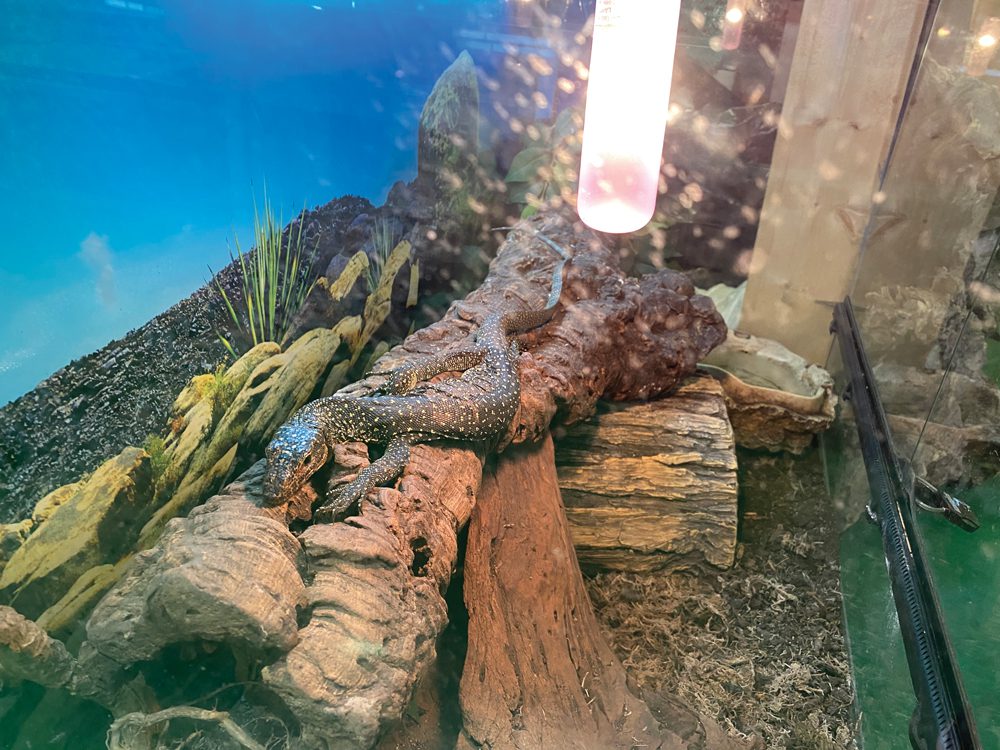
Peach-throated monitor for sale in Ireland. Photo by Rachel Presser
I left for California for a laundry list of reasons, with a more ubiquitous presence of the reptile hobby and the ability to legally have giant lizards as pets being near the top of that list. But herpers back home still worked around my home city’s blanket bans by having reptiles shipped to them or leaving city limits then returning. The bans weren’t strictly enforced unless you owned a pet store within city limits, nothing was really done to deter people from keeping banned reptiles as pets. Your landlord might evict you if they saw your giant lizard or your homeowners’ insurance could drop you if an adjuster got some tongue flicks after surveying the latest superstorm’s damage, but the city is unlikely to take action unless you sit outside the mayor’s house with a 10-foot python.
Reptile Legislation in the EU
Similarly to how there is no uniform federal law regarding the reptile trade in America, EU countries have their own regulations and local statutes like New York. Where Ireland is at one end of the spectrum, most Scandinavian countries are at the other.
Norway, perhaps best known for being the birthplace of black metal inspired by brutally cold weather, presents an even more inhospitable natural environment to our cold-blooded friends than Ireland. Diametrically opposing the Emerald Isle, Norway was notorious for its outright ban on all reptile and amphibian pets. Iceland also has a similar outright ban on all herptiles.
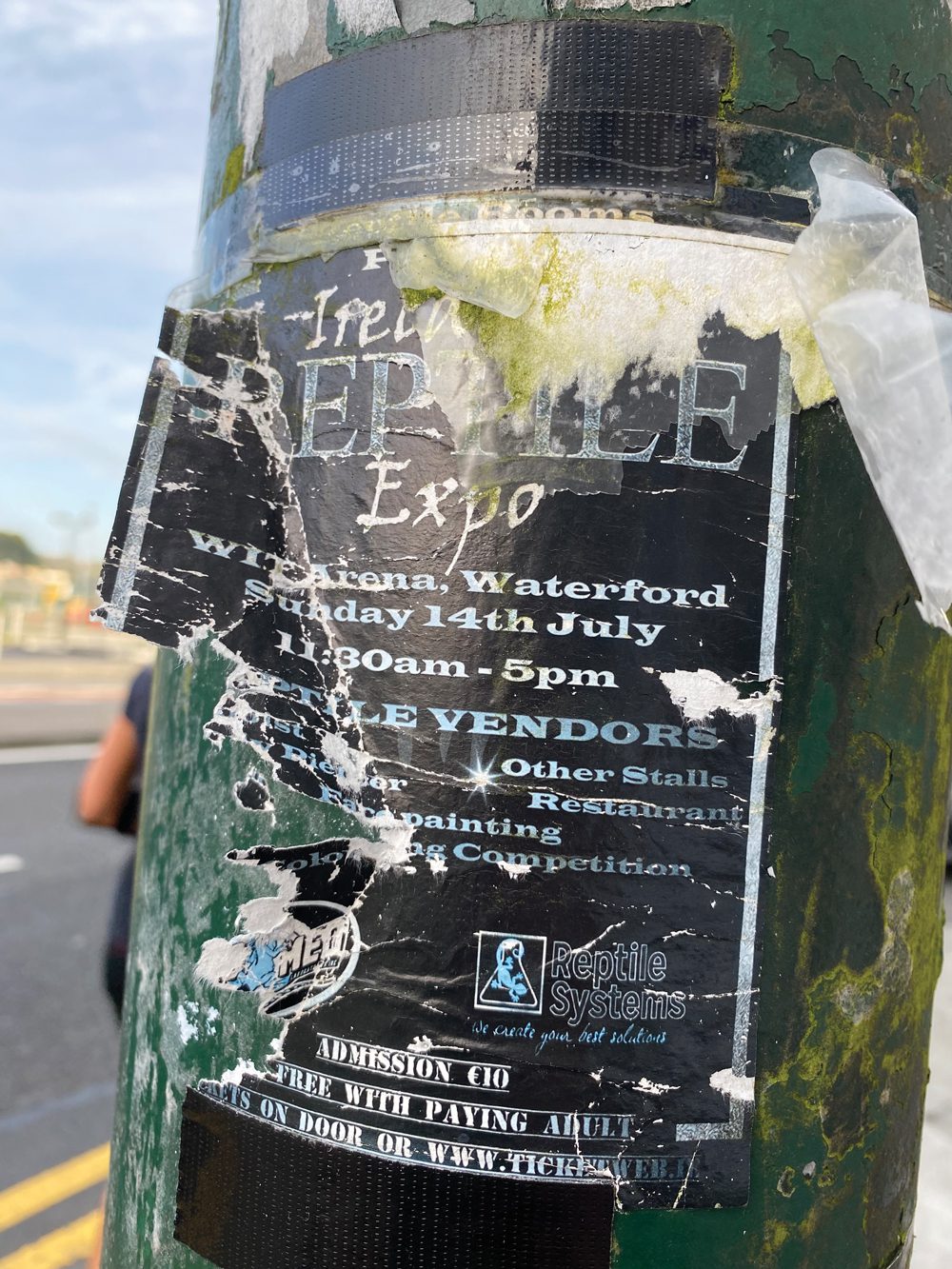
Old Reptile Expo flyer in Dublin. Photo by Rachel Presser
Iceland’s ban is still in effect but after pressure from reptile keepers and advocacy groups, Norway’s regulations relaxed in 2017 with 19 types of reptiles now permitted to be kept as pets. Relaxing the ban meant that reptile keepers now didn’t need to be afraid of taking sick pets to the vet for fear of jail time, massive fines, and having their beloved companions taken away.
With more urgent issues at hand for Irish lawmakers, such as potential reunification with Northern Ireland, regulating reptile keepers has not been a legislative priority. Norway’s ban didn’t completely deter irresponsible behaviors, and not all local laws in larger countries like the US proved enforceable–or even effective, for that matter. With those examples in mind, Ireland has chosen to let the reptile hobby grow with natives and expats alike by leaving it be.
This model would probably not work with large and climate-diverse nations that don’t fit on a small island, which certainly leaves out the US. One state’s invasive species that is deleterious to local wildlife is a harmless pet in another state.
Herping Culture in Ireland
When I was planning my vacation, I definitely knew that I was going to see the renowned reptile zoo in Kilkenny. Tucked away within the beautiful small city about a mile from the train station, the reptile zoo has so many amazing monitor, gecko, python, and tortoise species in addition to some amphibians.
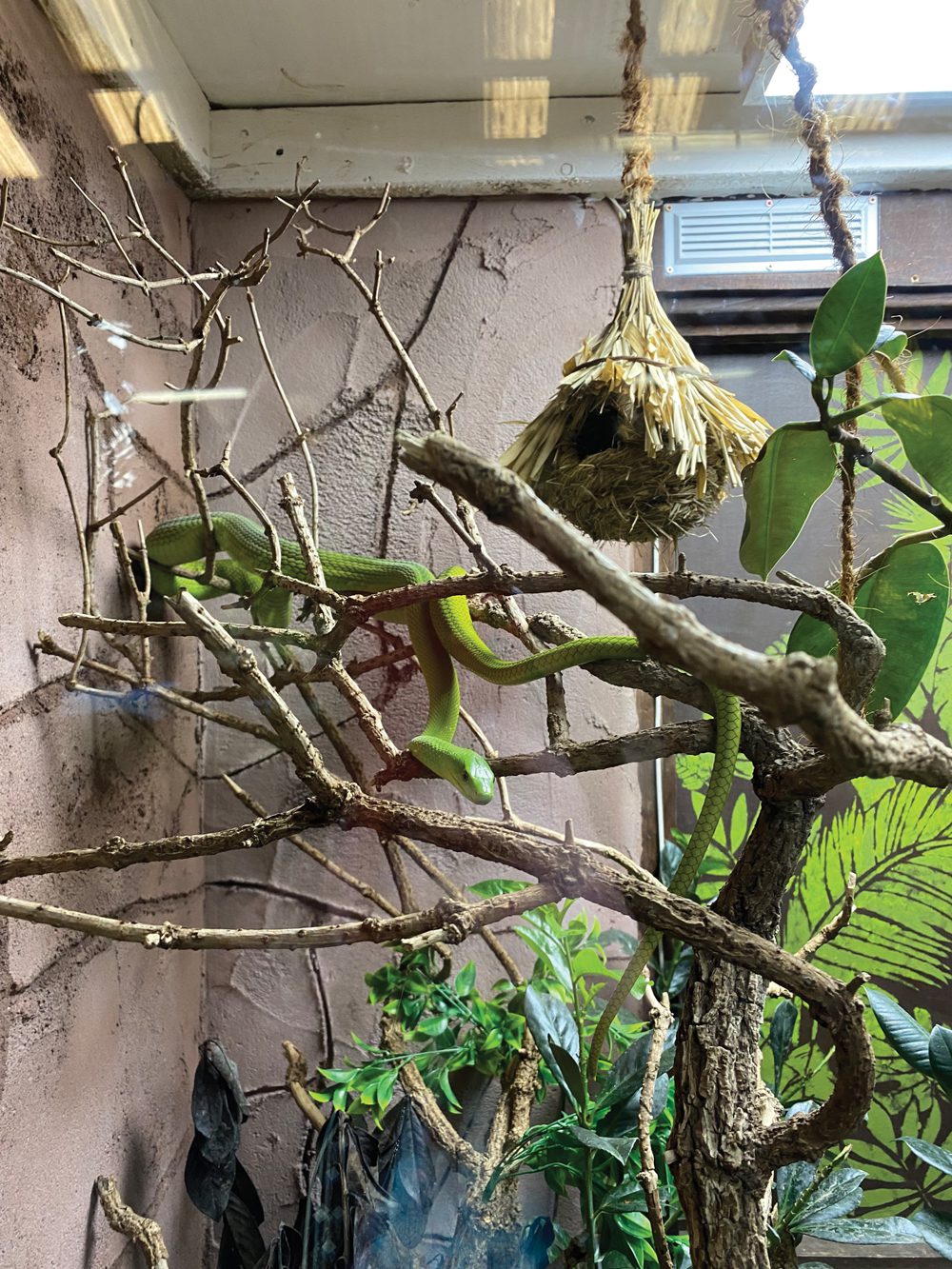
A green mamba at the National Reptile Zoo in Kilkenny. Photo by Rachel Presser
Every hour, the zookeepers bring out an animal for educational purposes whether the room is packed or there’s a very small audience. You’ll definitely want to come on a weekday when it’s quieter and less stressful for humans and herptiles alike.
My first exposure to Ireland’s surprisingly large reptile hobby however was Reptile Haven in Dublin. Located in Temple Bar slightly off the main drag, Reptile Haven is easily accessible in the city center yet doesn’t get slammed with the immense foot traffic like all the tourist trap pubs that Temple Bar is notorious for.
Bearded dragons and crested geckos are popular pet lizards in and around Dublin, with smaller reptile shops in eastern Ireland captive-breeding multiple generations of them. Reptile Haven had an impressive assortment of both imported and captive-bred snakes and lizards given the shop’s relatively young age and what easily comes by in the small island nation. Colombian boas, peach throat monitors, and iguanas populated the glass shelves within.
Per my conversation with the owner about the Irish government’s libertarian approach to the reptile hobby, he mentioned that the chilly island nation isn’t without its logistical challenges when it comes to keeping our pets safe and healthy. There’s things American reptile keepers often take for granted, such as easy access to frozen rodents and other feeders.
Ireland is the epitome of farm-to-table and locavore culture: Wexford County strawberries are famous for their sweetness and they did not disappoint, and Irish farming practices for produce and livestock are some of the most sustainable in the world.
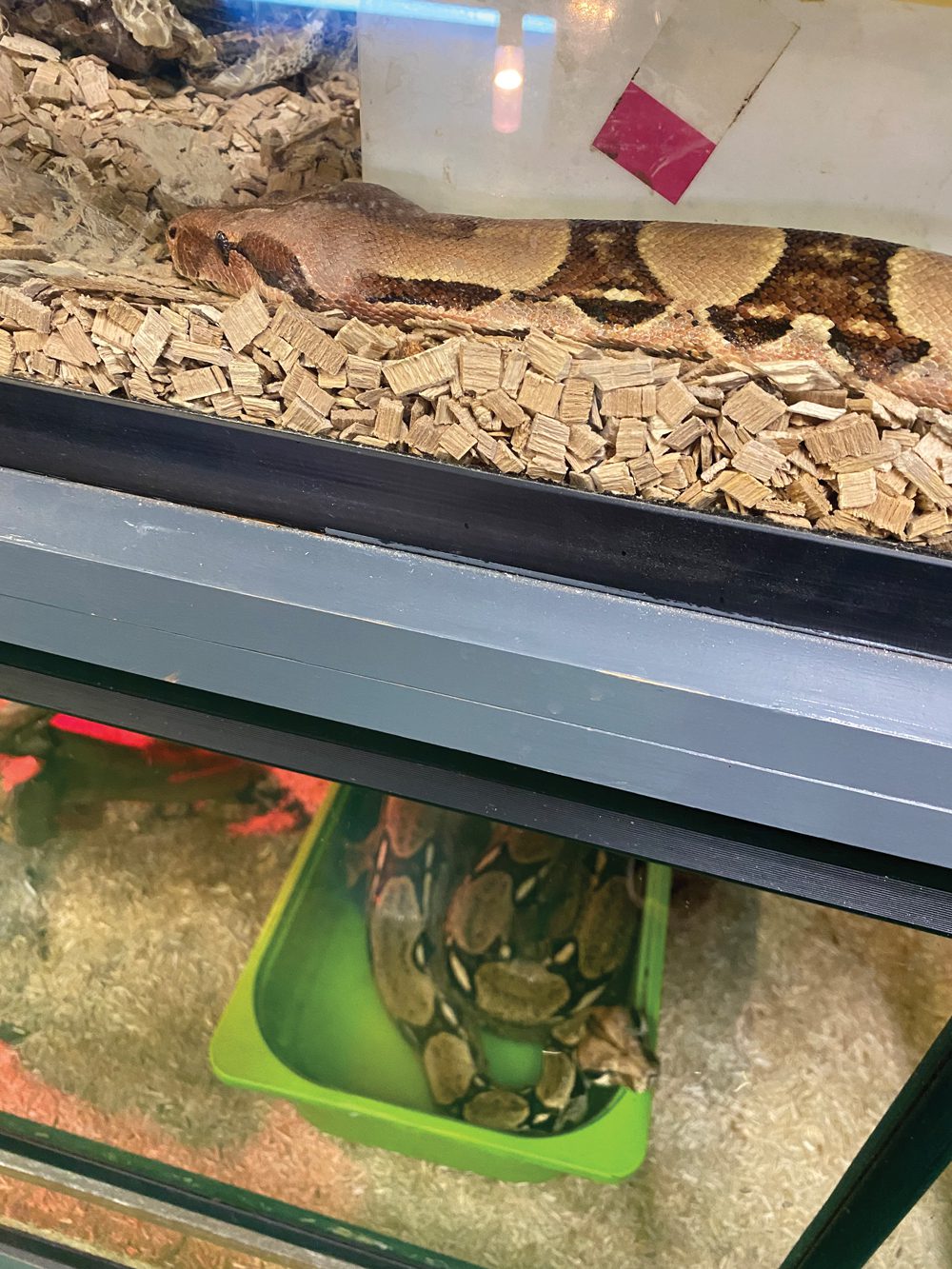
Boa constrictors for sale at Reptile Haven. Photo by Rachel Presser
Iguanas and bearded dragons get to have the freshest vegetables picked that very morning! Fish-loving monitors don’t get factory-farmed sushi, that cod was caught in Kilmore Quay when you were asleep. The zookeeper in Kilkenny mentioned that one of the rescue alligators, Battle, loved chicken legs from Lidl and that’s all he’d eat. I could see why, that chicken didn’t travel far.
But some of our companions are harder to feed and we can’t easily obtain their food at the local farmers’ market or Tesco. There’s no RodentPro or PetSmart to place an order with. At Reptile Haven, the owner said there weren’t many options for feeder suppliers and his best and most reliable one was in the UK. Due to Brexit, tariffs and trade embargoes have become a major issue for goods that are harder to come across in Ireland. Customs hold-ups and longer wait times are the norm, which isn’t good with hungry reptiles waiting for food.
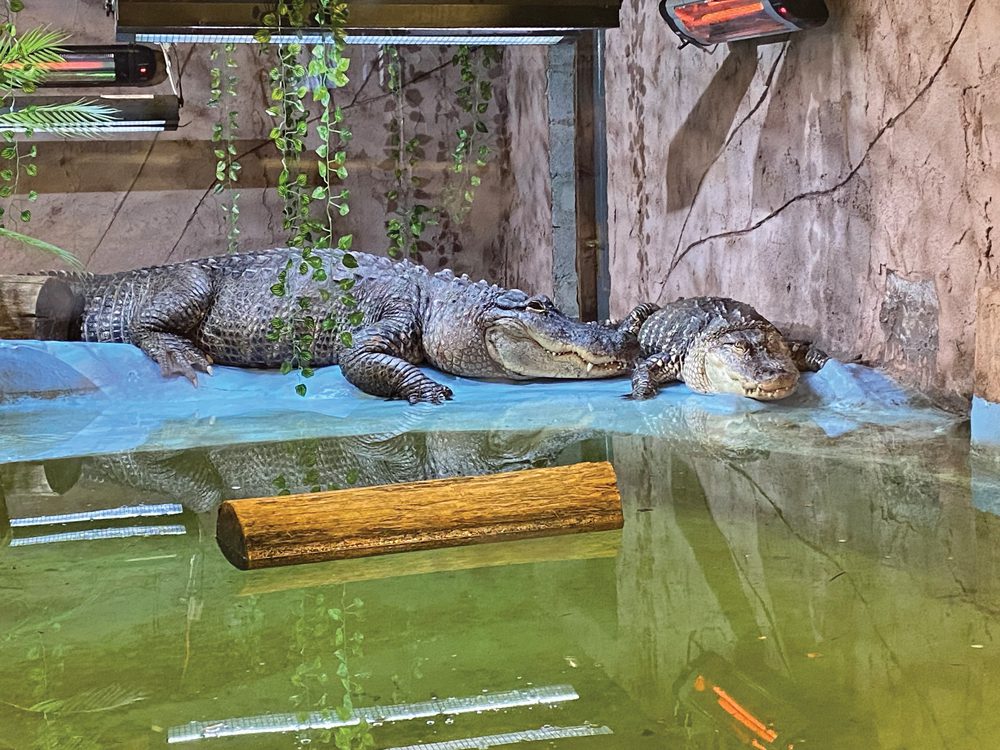
Two large crocodilians at the zoo.
What American reptile keepers take for granted with a few clicks of the mouse or swipe of the mobile phone, or a 20-minute drive if you reside in a metropolis such as Southern California, can be made logistically more difficult depending on the species that you keep in the land of no native snakes.
Although with the reptile hobby and the expat communities growing in tandem, perhaps an enterprising ratsicle expert will rise to this challenge.
Rachel Presser is a writer and game developer from The Bronx, and the founder of Sonic Toad Consulting. She has been keeping frogs and toads for 25 years which earned her the title of “that toad lady” in the games industry, and now resides in Los Angeles with her baby Kimberley rock monitor, Liora. Rachel’s various endeavors can be found at linktr.ee/sonictoad

